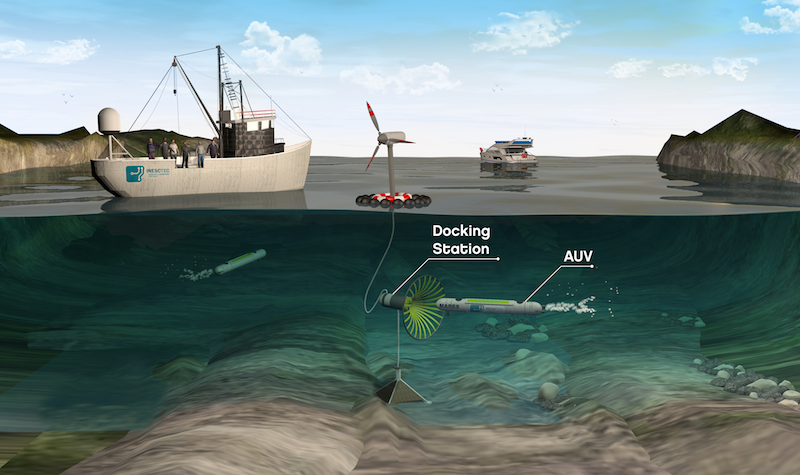INESC TEC develops underwater docking station for underwater robots
In October 2015, two teams from INESC TEC’s Centres for Telecommunications and Multimedia (CTM) and Robotics and Intelligent Systems (CROB) have started working on project ENDURE, led by INESC TEC (project leader). The goal with this project is to develop an underwater docking station for autonomous underwater vehicles (AUVs). The station will allow these vehicles to remain in the ocean for long periods of time.
21st December 2015
As part of the project, which will be concluded in March 2017, a component will also be developed that is capable of transferring power (wireless) to charge the batteries of the AUV, also enabling data transfer via WiFi and high docking precision of the AUV in the station.
There will be a demonstration in the Lisbon area, where a surface buoy will be used to generate power from renewable sources, as well as store power in batteries. The underwater robot MARES (Modular Autonomous Robot for Environment Sampling), developed by CROB, will be used to execute a predefined mission and to charge batteries at the docking station afterwards.
Besides INESC TEC, the consortium includes the Instituto Português do Mar e da Atmosfera (IPMA, the Portuguese Sea and Atmosphere Institute), and MARLO (Norway). INESC TEC is in charge of the technical components, while IPMA will define the requirements and use the technology. MARLO is responsible for disseminating and promoting the project, and also for defining commercial exploitation models.
The different activities in the project are being coordinated by researchers Luís Pessoa (leader) and Rui Campos, both from CTM, and by Aníbal Matos from CROB.
The ENDURE has a global budget of 256 thousand euros, funded by the European Economic Area Grants (EEA Grants).
The researchers mentioned in this news piece are associated with UP-FEUP and INESC TEC.
INESC TEC, December 2015


